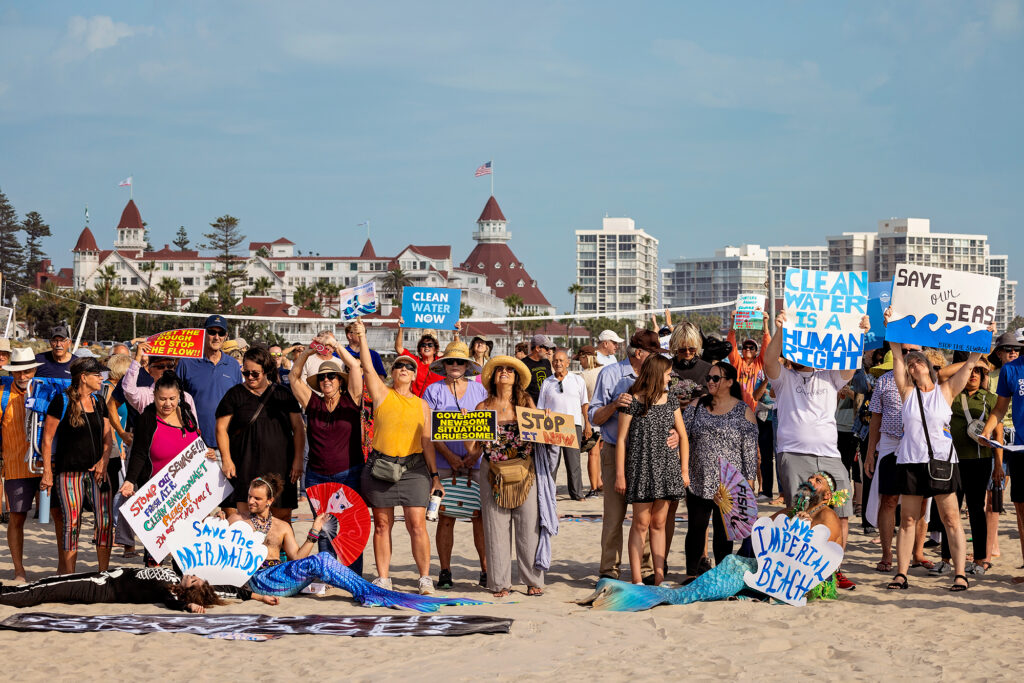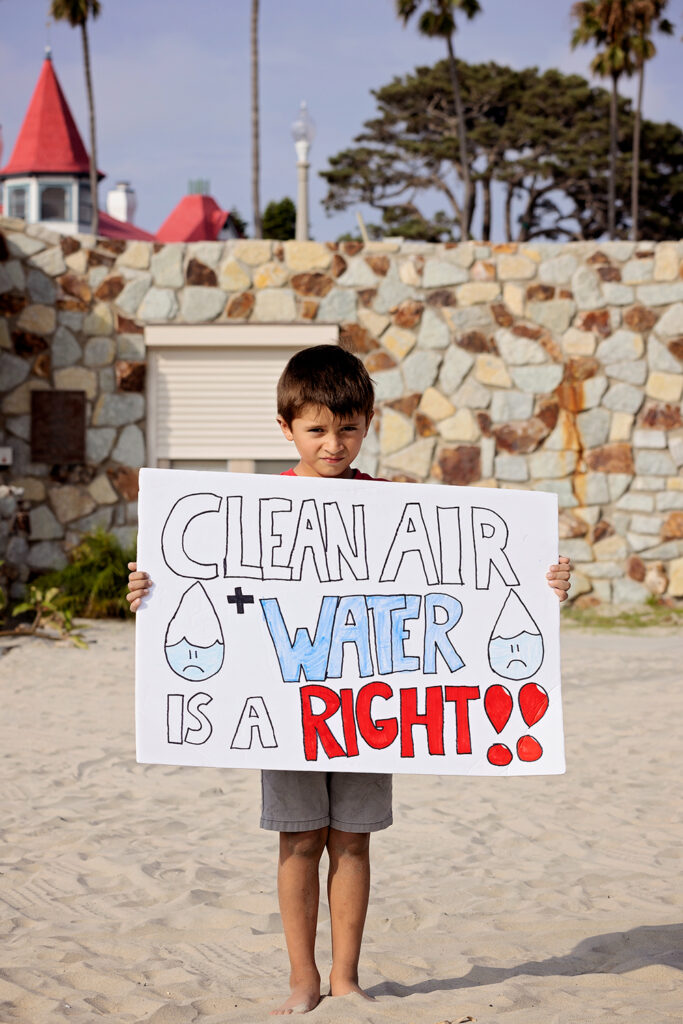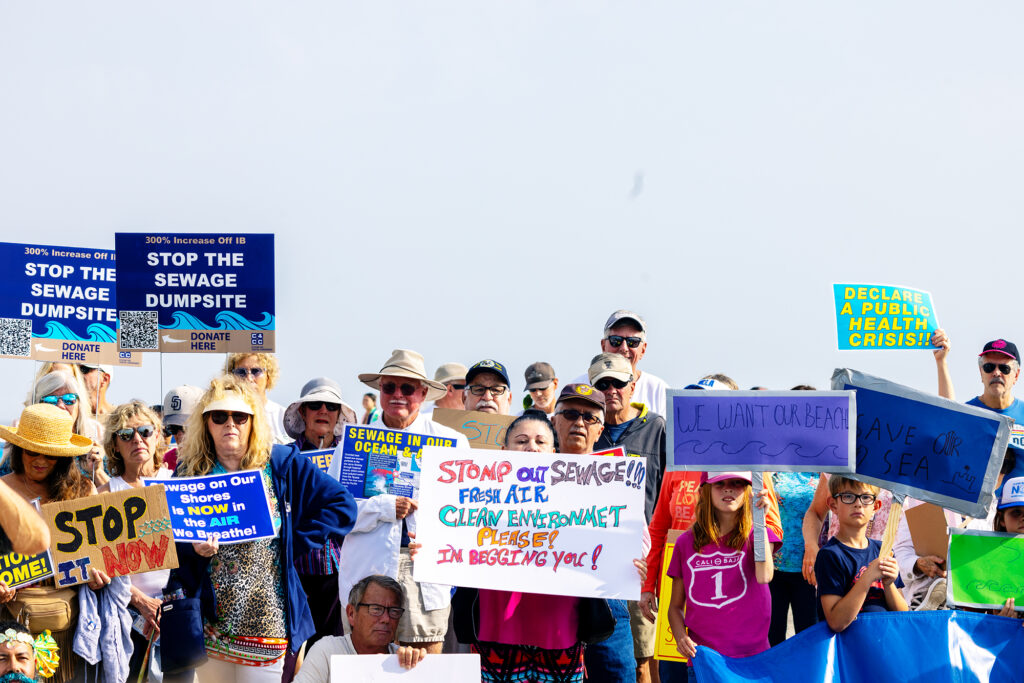
This summer was bookended by Stop the Sewage protests on Coronado’s beaches on Memorial and Labor Day weekends. The difference between the first and the last was palpable: more people, more politicians, more passion.
“What do we want? Stop the sewage! When do we want it? Now!” a crowd of more than 100 protesters chanted on Sept. 1 between speakers, including politicians from both Coronado and Imperial Beach.
Both cities have experienced widespread beach closures resulting from Tijuana sewage leaking into coastal water, but Imperial Beach has shouldered the brunt of it.

“Every year that passes with this crisis, we see less and less people at our beaches,” said Imperial Beach Mayor Paloma Aguirre. “It’s not right.”
Much of the protest centered on pressuring both Gov. Gavin Newsom and the Biden administration to allocate the funding needed to address failing infrastructure at the border.
That same day, the federal government announced an anticipated $350 million in additional funding in next year’s fiscal budget to address failing infrastructure at the border.
The funding will be used to double the treatment plant’s capacity from 25 million gallons per day to 50. The USIBWC is also working to expedite construction timelines, with construction possibly beginning in 2024, but by latest, 2025.
However, a permanent solution will still require ongoing funding, according to a letter addressed to Newsom from Radhika Fox, assistant administrator for the U.S. Office of Water, and Maria-Elena Giner, a commissioner for the International Boundary and Water Commission.
“This will require sustained annual appropriations to be sought through the budget process in FY 2025 and FY 2026 for the project to incrementally increase the capacity to the total 50 MGD capacity,” the letter reads.
At a public meeting last spring, IBWC officials said part of the reason the infrastructure fell into such disrepair is due to limited budget allocations that made preventative maintenance impossible. In June, officials discovered that the South Bay International Wastewater Treatment plant needed $150 million in deferred maintenance costs, a major blow to planned rehabilitation projects.

Newsom has not responded to ongoing phone and email requests for comment since San Diego County declared the sewage crisis a state of emergency in June, but he released a statement after the Environmental Protection Agency and IBWC announced its additional funding:
“I want to thank President Biden, the U.S. EPA, and the IBWC for their commitment to move this critical project forward on expedited timelines,” the statement reads. “This has been an issue that San Diego communities have dealt with for far too long. It’s an important step forward that the work on this critical project will finally begin. (…) I look forward to working with federal partners to fully address this challenging issue.”
In October, the Mexican government expects to solicit contracts to construct a new wastewater treatment plant at San Antonio de los Buenos, which will have a treatment capacity of 18 million gallons per day. Repair of a major wastewater pipeline in Mexico is expected to be completed in November.

“Thank you to everyone from the South Bay for being here today to demand – to demand – that our elected officials from the state and federal governments stop talking about solving the single greatest ongoing environmental issue in our nation right now and start acting on it,” Coronado Mayor Richard Bailey said at Friday’s protest.

Laura Wilkinson, who founded Stop the Sewage alongside Marely Ramirez, said she won’t be satisfied until work is completed.

“Until we have shovels in the ground and clean water,” she said, “it’s just another promise on its way to being broken to the citizens, family, U.S. Navy, first responders, border patrol agents, and lifeguards who have been sickened by these waters and have heard these promises before. We need immediate action. Where is our governor? Why is he letting this happen to us?”
However, Wilkinson is pleased at how much more traction her cause has gained.
“The protests are drawing attention and raising awareness,” she said. “We are enlisting more people in this fight for environmental justice.”

Watch Brad Willis’ footage of the protest:




